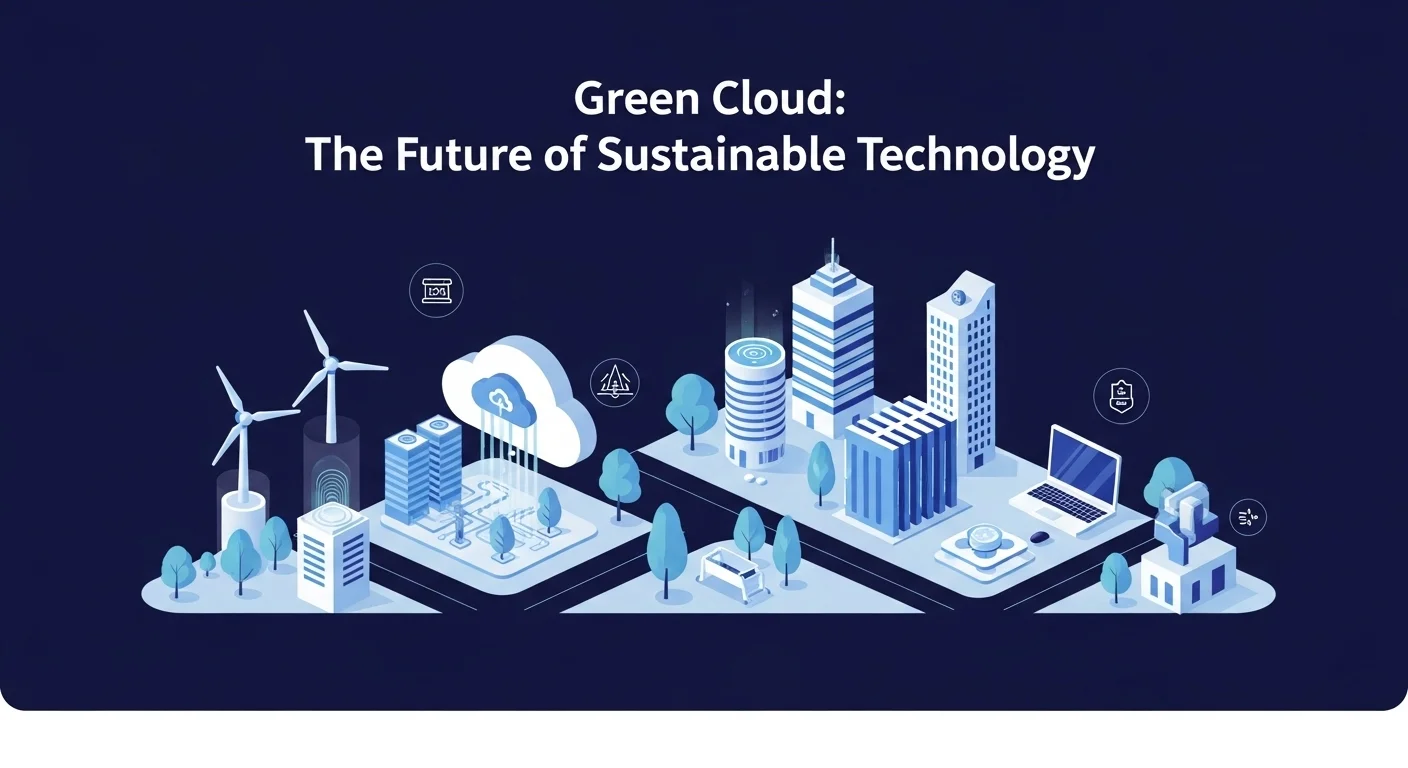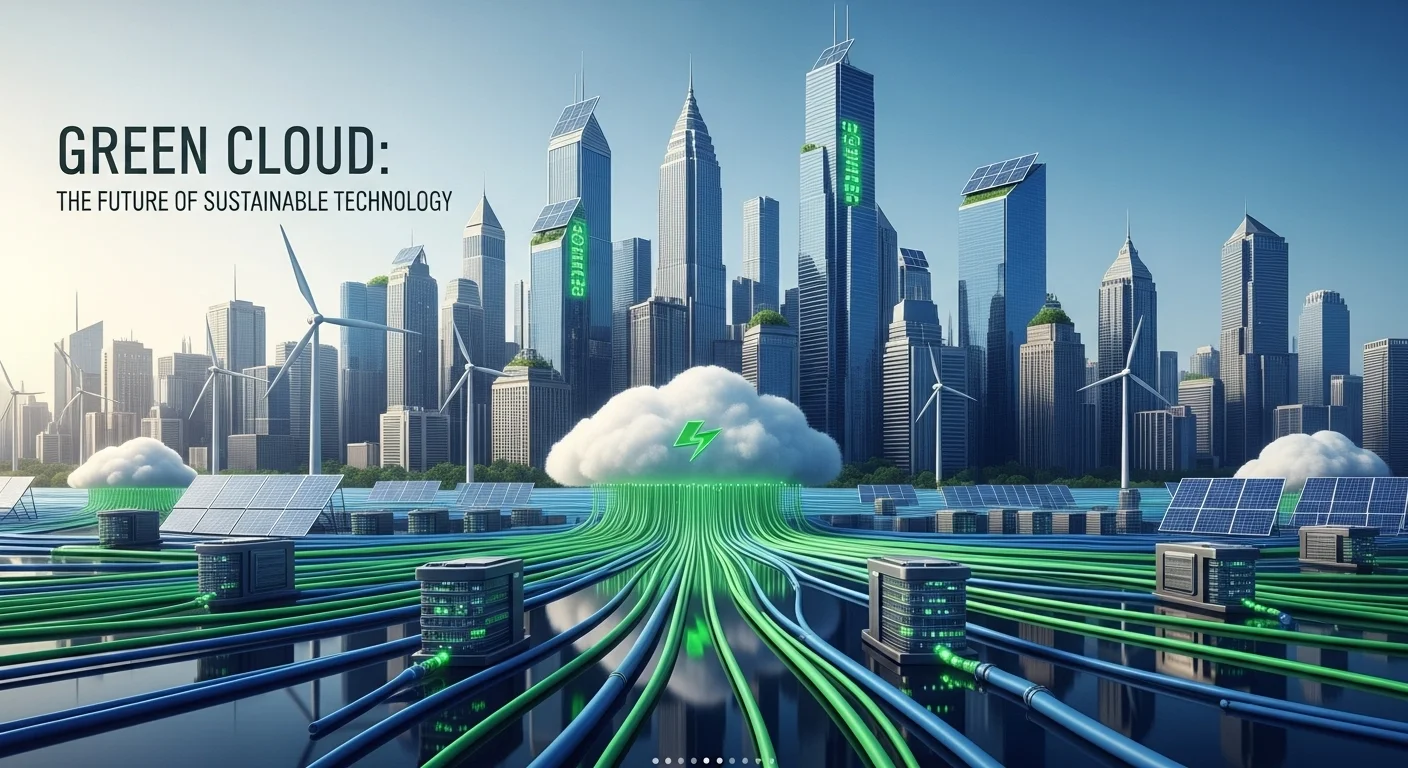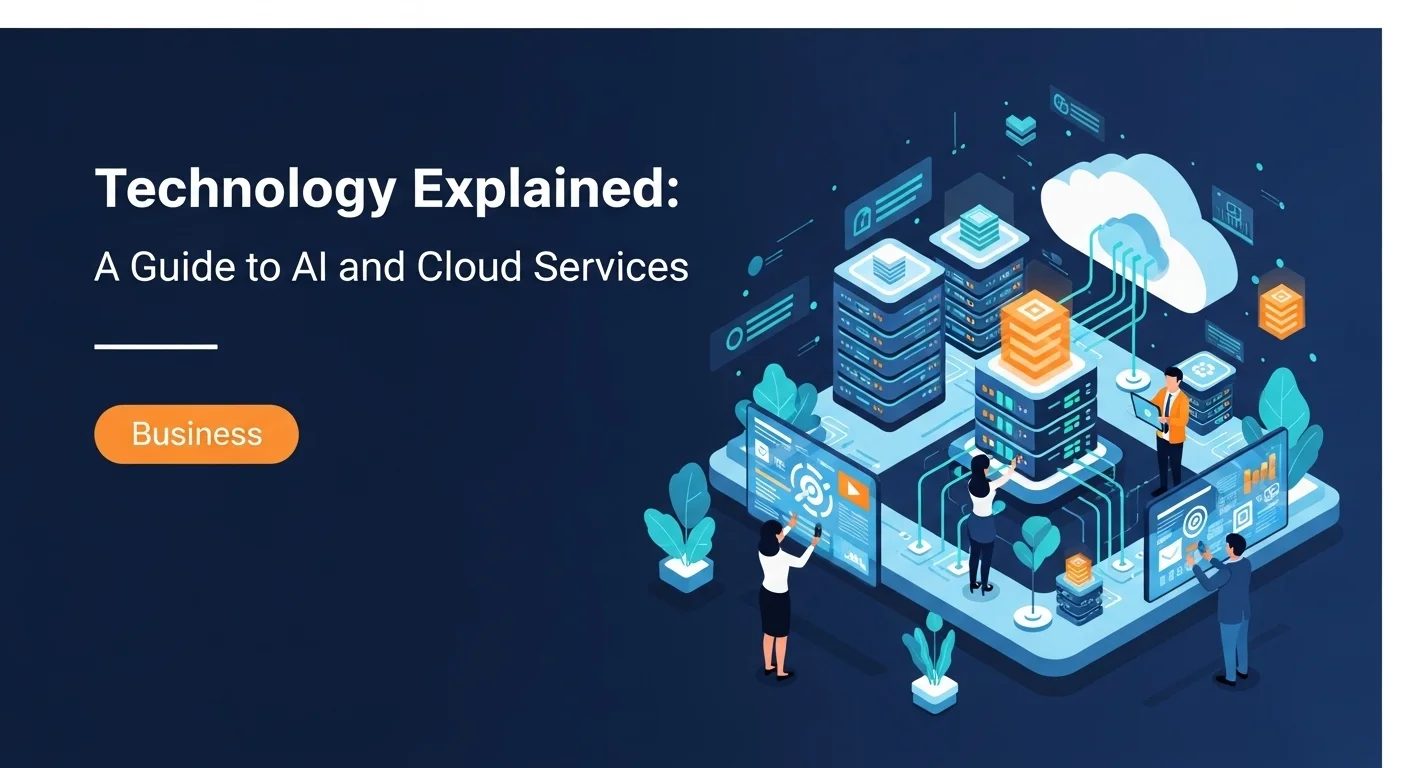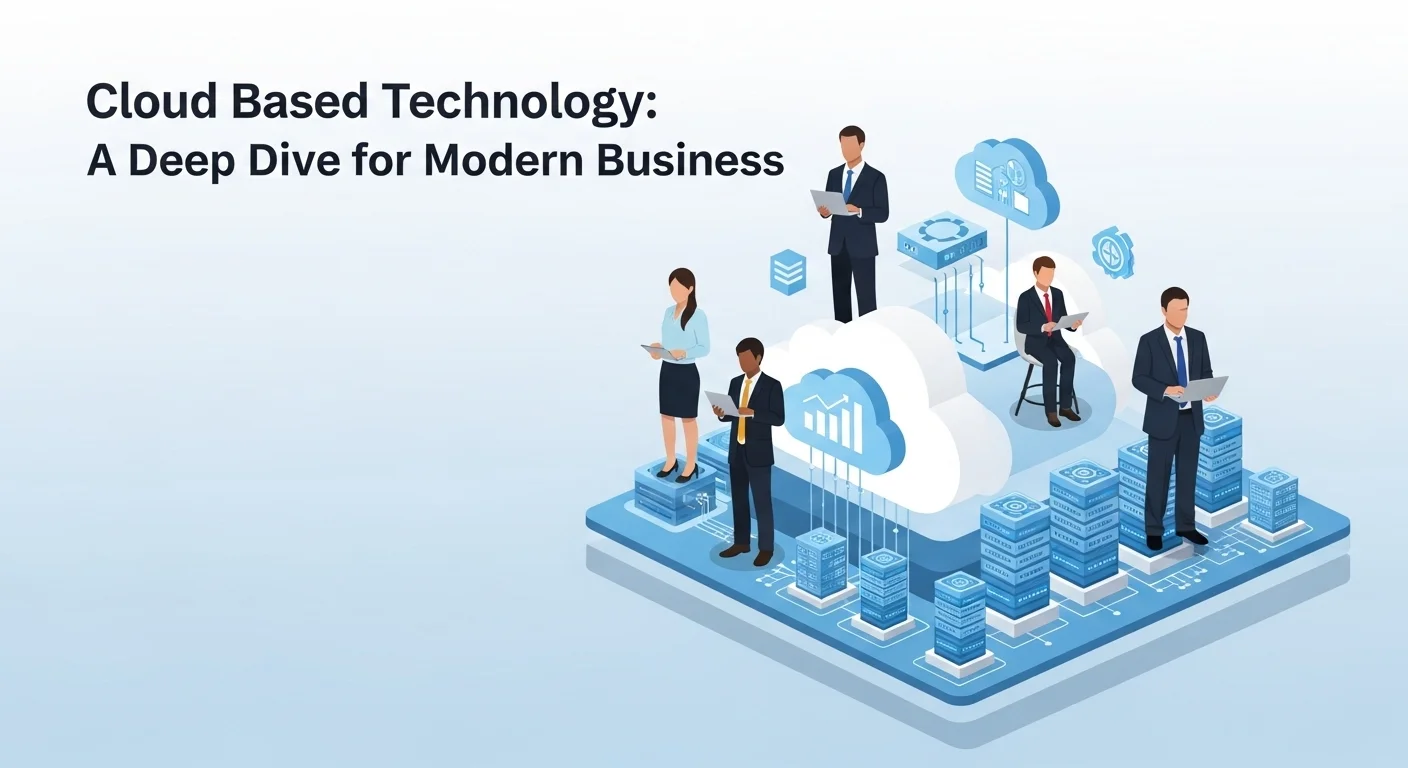A Practical Guide to Green Cloud: Smarter Tech for Your Business and the Planet

Executive Summary
For years, I've watched as our reliance on digital technology exploded, and with it, the environmental footprint of the data centers powering our world. But a powerful and necessary shift is happening: Green Cloud. I want to be clear—this isn't just about being eco-friendly for the sake of it; it's about making incredibly smart business decisions. In this article, I'll walk you through what green cloud computing really is, cutting through the jargon to show you how it directly cuts your energy bills and boosts your brand's reputation. We'll look at the clever ways industry giants are engineering more efficient data centers and what that means for you. Consider this your practical, hands-on guide to adopting a greener, more cost-effective, and resilient tech strategy for a better future.
Table of Contents
Table of Contents
What is Green Cloud and why does it matter?
Every time we stream a movie, join a video call, or save a file to the cloud, there's a physical consequence. That data lives in massive buildings called data centers, which are the heart of the internet. The problem is, they are incredibly hungry for electricity, contributing significantly to global energy consumption. For years, this was just the accepted cost of progress. But now, a much smarter paradigm is taking center stage: Green Cloud. At its heart, green cloud computing is a collection of practices and technologies designed to make our digital infrastructure environmentally sustainable. It's about fundamentally rethinking how we power and run the cloud to slash energy use, reduce carbon emissions, and prioritize renewable energy. It’s a complete overhaul, looking at everything from the physical hardware and cooling systems to the software itself, all through the lens of efficiency and sustainability.
The importance of this shift is something I can't overstate. As our world becomes more digital, the energy demand from data centers is set to skyrocket. Traditional, in-house IT setups are often shockingly inefficient. I've walked into server rooms where racks of servers are running 24/7, burning power whether they're doing any real work or not. This is a massive waste of energy and money. Green cloud computing tackles this problem head-on. By moving to a major cloud provider, companies tap into incredible economies of scale. These providers use techniques like virtualization to run many 'virtual' servers on a single physical machine, which boosts hardware use from maybe 15% to over 80%. This one change alone leads to huge energy savings and less electronic waste.
The Core Principles of Green IT Cloud
The entire green IT cloud movement is built on a few straightforward principles. If you're looking to make a real difference, understanding these is your first step.
- Energy Efficiency: This is the big one. It's about using hardware—servers, storage, networking gear—that gives you the most bang for your electrical buck. But it goes beyond that. It's about the data center building itself. Think of clever cooling solutions like using natural air in colder climates (like Scandinavia) instead of running giant, power-hungry air conditioners.
- Resource Optimization through Virtualization: This is the key that unlocks so much efficiency. Virtualization lets one powerful physical server act like dozens of smaller, independent ones. This means you need far fewer physical machines, which cuts down on energy, cooling, and the physical space needed to house them. It’s about doing much more with much less.
- Renewable Energy Sources: A truly 'green' cloud is one powered by clean energy. In my experience, the leading providers like Google, Microsoft, and AWS are making enormous investments in wind and solar farms to power their operations. They have ambitious goals to be completely carbon-neutral or even carbon-negative. When choosing a provider, you should absolutely ask about their commitment to renewable energy.
- Sustainable Software Engineering: Here's something many people miss: how we write code directly affects power consumption. Inefficient software makes the processor work harder, burning more energy. Sustainable software engineering is all about creating lean, efficient applications. Insights from firms like Accenture have shown that even small choices in how an AI model is trained can have a massive impact on its energy footprint.
- Measurement and Transparency: You can't fix what you can't see. A core part of any green strategy is being able to track your environmental impact. Cloud providers are now offering tools, like carbon footprint calculators, that let you see the emissions associated with your specific services. This data is gold for setting reduction goals and showing your customers and investors that you're serious about corporate social responsibility.
The Business Case: Why Green Cloud is Smart Business
While the environmental angle is compelling, the move to green cloud services is equally driven by powerful business benefits. This isn't just an ethical choice; it's a strategic move that pays real dividends.
First, the cost savings are undeniable. Energy is a huge operating expense. By moving to an efficient cloud, you cut your direct energy costs significantly. Research I've followed from Accenture shows that moving to the public cloud can lower the total cost of ownership by 30-40%, mainly through better server use and more efficient infrastructure. That's money you can pour back into innovation.
Second, embracing greener tech dramatically improves your brand image. Today's consumers and investors are savvy; they want to support companies that show a real commitment to sustainability. Having strong green credentials can be a powerful way to stand out, attract customers, and even recruit top talent who want to work for a company that cares.
Third, it gets you ready for the future. Governments everywhere are tightening environmental rules and putting a price on carbon. Companies with a heavy carbon footprint are going to face more taxes and regulations. By adopting sustainable computing now, you get ahead of the curve, reduce future risks, and build a more resilient business.
Finally, the journey toward a green IT cloud often sparks innovation. The process of auditing and optimizing your technology forces you to find and fix inefficiencies, leading to more modern, agile, and robust systems. A report from Accenture described this as a 'double helix' effect, where financial success and sustainability are woven together, creating value for everyone. The question is no longer *if* your business should adopt green cloud services, but *how fast* you can make this transformative approach a core part of your strategy.

Complete guide to Green Cloud in Technology and Business Solutions
Making the switch to a Green Cloud isn't just a simple migration; it's a thoughtful process that combines smart technology, strategic business planning, and choosing the right partners. It’s a journey toward optimization. In my years helping companies with this, I've found that success comes from focusing on both the technical and business side of the equation. This guide breaks down the methods you need to build a strategy that delivers real environmental and business value.
Technical Methods for a Greener Cloud
The technical heart of sustainable computing is all about efficiency, from the physical building down to the code. The major cloud providers are leading the way, but how you use their services is just as important.
1. Data Center Design and Location
Believe it or not, where a data center is located matters. The smartest providers build their facilities in cooler climates to take advantage of free air cooling, which slashes the energy needed for air conditioning. They also build near renewable energy sources like hydroelectric dams or wind farms. As a customer, you have a role to play here. When you deploy an application, you can choose a cloud region that has a lower carbon score or is powered mostly by renewables. That one choice can make a huge difference.
2. Energy-Efficient Hardware and Cooling
Inside the data center, it's all about optimized hardware. Green cloud services run on servers designed for low power use. They also use advanced cooling methods. Instead of blasting an entire room with cold air, many are moving to direct liquid cooling, where fluid circulates over the hottest components, like CPUs. It's a far more targeted and efficient way to keep things cool.
3. Virtualization, Containerization, and Serverless Computing
These three are the absolute pillars of cloud efficiency. Here's my simple breakdown:
- Virtualization: This is the original cloud magic trick. It lets one physical server act as many, dramatically increasing how much work gets done on a single machine. It's the difference between a nearly empty bus and a full one—much more efficient.
- Containerization (e.g., Docker, Kubernetes): Containers are an even lighter-weight version of virtualization. They let you pack even more applications onto a single server, further boosting efficiency and reducing the energy needed for each app.
- Serverless Computing (e.g., AWS Lambda, Azure Functions): In my opinion, this is one of the most powerful green architectures available. Think of it like a light switch that's only on when you're in the room. With serverless, code only runs when it's triggered, and the infrastructure scales from zero and back down again automatically. You pay—in both dollars and carbon—only for the exact compute time you use. No waste.
4. AI-Powered Optimization
Artificial Intelligence is now being used to make data centers even smarter. AI can predict usage spikes, shift workloads around, and fine-tune cooling systems in real-time. For instance, Google used its DeepMind AI to manage data center cooling, which cut the energy used by those systems by up to 40%. That's a level of optimization that's impossible for humans to achieve manually.
Business Techniques for Green Cloud Adoption
Having the best tech means nothing without a smart business plan to guide it. A successful green transition needs a clear strategy and buy-in from everyone.
1. Assess and Audit
Your first step is to know where you stand. Before you change anything, you need a baseline. Take stock of your current applications and infrastructure. Figure out what's consuming the most resources and identify 'zombie' servers or forgotten storage that can be shut down. Cloud providers offer tools to help you estimate your carbon footprint, giving you the hard data you need to make a case for change. As frameworks from experts like Accenture emphasize, a thorough assessment is where you'll find the biggest opportunities.
2. Develop a Green Cloud Strategy
Once you have your baseline, build a roadmap. This isn't just for the IT department; it's a business-wide strategy. Set clear, measurable goals (e.g., 'cut our IT carbon footprint by 50% by 2030') and define how you'll track progress. Decide which applications to move first based on where you'll get the biggest efficiency gains. It's crucial to get leaders from finance, operations, and sustainability on board to make sure everyone is aligned.
3. Choose the Right Green Cloud Services Provider
Not all clouds are created equal when it comes to sustainability. When you're picking a provider, look past the marketing and ask the tough questions:
- What percentage of your power comes from renewable energy?
- What are your public goals for carbon reduction? Are you aiming for neutral or negative?
- Do you give me tools to track my own carbon footprint?
- How open are you with your sustainability reports?
Comparing providers like AWS, Microsoft Azure, and Google Cloud on these points is critical. For years, I've watched Google lead in matching its energy use with 100% renewables, while Microsoft has an incredible goal to be carbon negative by 2030. AWS, as the market leader, is the world's biggest corporate buyer of renewable energy. Do your homework.
4. Optimize and Innovate Continuously
Going green isn't a one-and-done project. It's a continuous process of improvement. This is where you put a 'green' lens on your cloud operations. Your teams should always be looking to:
- Right-size instances: Make sure you're not paying for more server power than you actually need.
- Implement auto-scaling: Automatically adjust resources to match demand perfectly, avoiding waste during quiet periods.
- Manage data smartly: Move old, rarely used data to cheaper, lower-energy storage tiers, and delete data you no longer need.
- Adopt sustainable architecture: Modernize old applications to be cloud-native. An application designed for the cloud can, as some studies suggest, be up to 98% more carbon-efficient than its old on-premise version.
By blending these technical and business approaches, you can build a powerful and effective sustainable computing program. It's a strategic transformation that, in my experience, always delivers lasting environmental, financial, and reputational rewards.

Tips and strategies for Green Cloud to improve your Technology experience
Adopting a Green Cloud mindset goes beyond corporate goals; it’s about the practical, everyday actions your teams can take. In my experience, focusing on sustainability doesn't just make your tech greener—it makes it better. Systems become more efficient, more cost-effective, and more resilient. This section is all about the concrete tips, strategies, and tools your business can use to truly master green cloud technology and make a real-world impact.
Best Practices for Developers and IT Operations
The people building and managing your applications are on the front lines of this effort. By weaving sustainable practices into their daily work, they can make a huge difference to your organization's carbon footprint.
1. Practice Carbon-Aware Computing
This is a more advanced but powerful strategy. It's about designing your applications to be smart about when and where they run. The idea is to schedule heavy, non-urgent computing jobs for times and locations where the power grid is greenest—for example, running a big data analysis job overnight when wind power is plentiful, or in a cloud region where solar is at its peak. Groups like the Green Software Foundation are creating tools to make this 'carbon-aware' approach easier for everyone to adopt.
2. Embrace Efficient Coding
How you write your code truly matters. A clunky, un-optimized algorithm can use dramatically more processing power than an efficient one. I always advise developers to focus on these basics:
- Choose the right tool for the job: Some programming languages are simply more energy-efficient. For heavy lifting, compiled languages like C++ or Rust often outperform interpreted ones like Python in both speed and energy use.
- Optimize your logic: Using the right data structures and algorithms can slash processing time and resource needs. It’s a fundamental part of good, and green, coding.
- Minimize data movement: Every time data is moved, it consumes energy. Design your systems to process data as close to where it's stored as possible.
3. Master Resource Management
Waste is the enemy of a green cloud. IT teams should be ruthless about eliminating it with strict policies:
- Terminate idle resources: Set up automated scripts to find and shut down any virtual machines, databases, or other resources that are sitting idle. It's like turning off the lights when you leave a room.
- Delete orphaned storage: Regularly clean up old storage volumes and snapshots that are no longer attached to anything. They silently rack up costs and a carbon footprint.
- Leverage spot instances: For workloads that can handle interruptions, use spot instances. You're essentially buying a cloud provider's spare capacity at a huge discount. This helps the provider maximize the utilization of their data center, a core principle of sustainable computing.
Business Tools and Resources for Your Green Journey
You don't have to go on this journey alone. There are fantastic tools and resources available to guide you.
1. Cloud Provider Sustainability Tools
The major cloud providers have a vested interest in helping you become more sustainable. Their tools are the best place to start:
- Microsoft Azure: The Microsoft Sustainability Manager and Emissions Impact Dashboard give you detailed reports on the carbon emissions from your Azure services.
- Google Cloud Platform (GCP): Google's Carbon Footprint tool provides incredibly detailed emissions data for every project, letting you pinpoint hotspots. They also score their regions on 'carbon-free energy' to help you make greener choices.
- Amazon Web Services (AWS): The AWS Customer Carbon Footprint Tool summarizes your emissions, and more importantly, the AWS Well-Architected Framework now includes a Sustainability Pillar, which is a goldmine of best practices for designing green systems.
2. The Role of Consultancies and Frameworks
Sometimes, you need an expert guide. Firms like Accenture have developed specialized advisory services to help businesses navigate this transition. They use tools to model different scenarios and calculate potential carbon and cost savings, building a clear and compelling business case for change. Leaning on that kind of expertise can fast-track your progress and help you avoid common pitfalls.
3. External Alliances and Standards
Joining industry groups connects you with a community of experts. The Green Software Foundation (GSF), backed by giants like Microsoft, Accenture, and Google, is a key organization here. They are working to create standards, tools, and best practices for building green software. Following their principles is a fantastic step for any development team that's serious about sustainability.
Building a Quality Tech Experience with Green Cloud
Ultimately, integrating green cloud services leads to a superior technology experience. I've seen it time and again: sustainable applications are efficient applications. They run faster, they're more reliable, and they cost less. When your teams focus on energy efficiency, they are also inherently improving performance. When they focus on eliminating waste, they're tightening cost controls and creating cleaner, more manageable systems.
A successful transition creates a culture where sustainability is a key measure of success, right alongside performance and security. It encourages a move from 'always-on' systems to 'on-when-needed' architectures. This is the future of quality technology—a future where innovation and responsibility work together, powered by the principles of green cloud computing.
For those who want to dive even deeper, I'd recommend looking into the work done by the Uptime Institute. They provide excellent research and certifications for data center efficiency, offering a broader context for why choosing efficient green cloud services is so crucial for the entire industry.
Expert Reviews & Testimonials
Sarah Johnson, Business Owner ⭐⭐⭐
Good info on Green Cloud, but as a small business owner, I would have loved to see a few more practical, real-world examples I could use right away.
Mike Chen, IT Consultant ⭐⭐⭐⭐
A solid overview of Green Cloud. It definitely helped me grasp the main ideas, though some of the technical bits could have been a little simpler.
Emma Davis, Tech Expert ⭐⭐⭐⭐⭐
Fantastic article! Really comprehensive and clear on Green Cloud. This was a huge help for my specialization work, and I understood it all perfectly.



